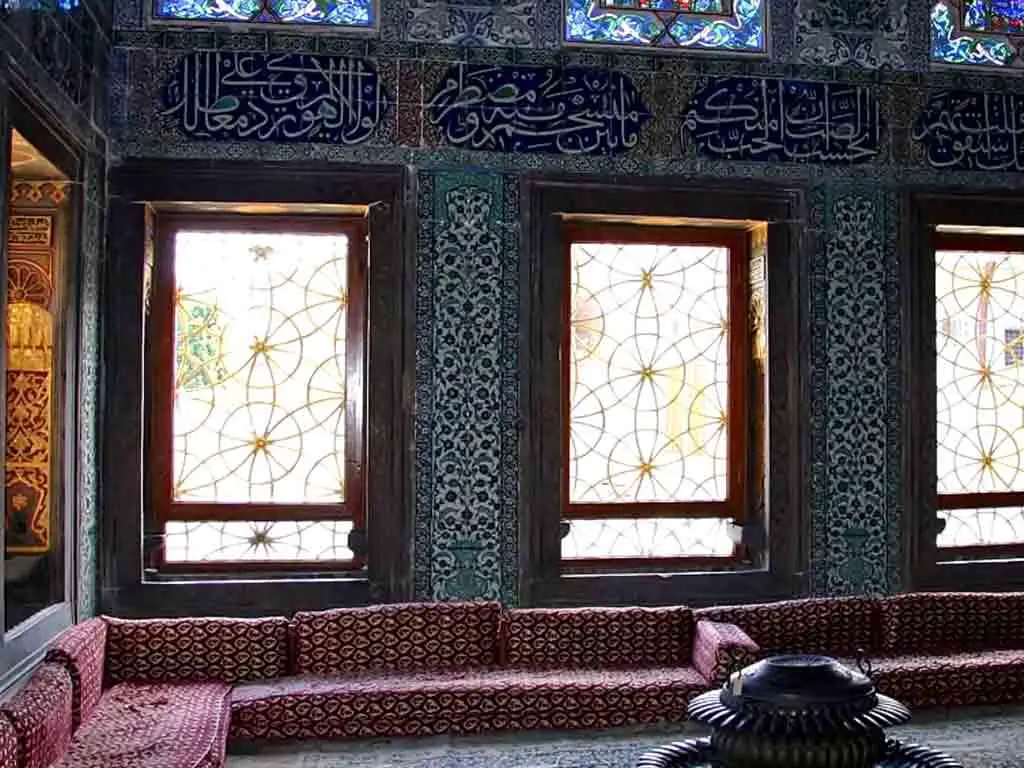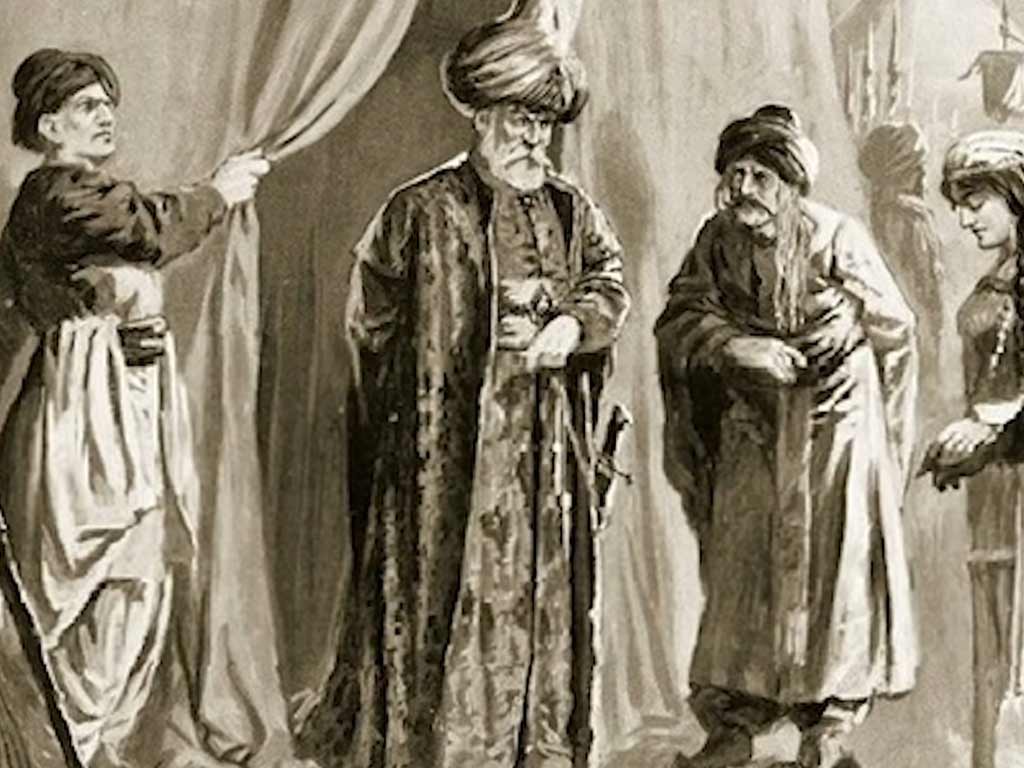The hierarchy within a harem, an exclusive living space traditionally associated with rulers or affluent individuals, constitutes a fascinating and intricate social order.
Rooted in historical contexts like the Ottoman Empire and Imperial China, harem hierarchies establish a structured framework for the relationships, roles, and status of women within these secluded quarters.
This complex system typically places wives and female relatives of the ruler at the pinnacle, followed by concubines with distinct roles such as odalisques, favorites, or consorts.
Whether navigating the opulent chambers of the Ottoman harem or the imperial courts of China, understanding this hierarchical tapestry unveils a captivating interplay of power, social norms, and personal dynamics.

What Is a Harem?
A harem is a secluded living space where a ruler or wealthy individual maintains a group of women, chosen for beauty or political alliances.
Common in historical contexts like the Ottoman Empire and Imperial China, a harem houses wives, concubines, and sometimes female relatives.
The hierarchy within a harem delineates status, with wives and consorts at the top, followed by concubines.
The term often evokes images of opulence, secrecy, and romanticized intrigue, embodying a complex social structure where relationships, power dynamics, and societal norms intertwine.
What Is the Hierarchy in a Harem?
A harem, often shrouded in mystery and romanticized in historical tales, is a complex social structure with a well-defined hierarchy.
The term “harem” typically refers to the private quarters of a ruler or wealthy individual, where a group of women, chosen for their beauty or political alliances, resides.
The hierarchy within a harem delineates the status, roles, and relationships among its female members, creating a dynamic and sometimes competitive environment.
The Ottoman Harem: Wives, Concubines, and Eunuchs

In the Ottoman Empire, the harem was a central institution, and its hierarchy was carefully structured.
At the pinnacle were the wives and female relatives of the emperor, signifying the highest status.
Following them were the concubines, categorized into odalisques (virgins), concubines (engaged in “one night stands”), ikbals (favorites), and kadins (favorites “wives”).
Eunuchs played a crucial role in maintaining order and serving as intermediaries within this intricate social system.
Imperial China: The Shifting Ranks of Imperial Consorts
In the context of Imperial China, the harem system underwent variations over different dynasties.
The hierarchy within the Imperial Chinese harem was marked by the ranks of imperial consorts, whose importance influenced the standing of their offspring.
This system considered both birth order and the prominence of mothers in determining the status of heirs.
Despite these nuances, English translations often simplify the hierarchy into three broad categories: empress, consorts, and concubines.
Common Elements: Emphasizing Empress, Consorts, and Concubines
Regardless of cultural differences, certain commonalities persist in harem hierarchies.
English translations often simplify these structures into three primary ranks: empress, consorts, and concubines.
The empress, occupying the highest position, is typically the principal wife and holds a significant influence.
Consorts, though lower in status, still wield considerable power, and concubines, while further down the hierarchy, play crucial roles in providing heirs and fulfilling specific functions within the harem.
What Are the Ranks in a Harem?

A harem, historically synonymous with opulence and secrecy, features a structured social hierarchy that shapes the lives of its female inhabitants.
The intricate ranks within a harem, whether in the Ottoman Empire or Imperial China, delineate status, roles, and relationships.
This exploration delves into the distinct layers that define the hierarchy within these exclusive quarters, shedding light on the varied titles and responsibilities assigned to the women who inhabited these secluded spaces.
Wives and Female Relatives: Pinnacle of Prestige
At the zenith of the harem hierarchy are the wives and female relatives of the ruler. Their status signifies the highest level of prestige and influence within the harem, often determined by factors such as birth, familial connections, and political alliances.
Wives held a unique position as principal partners, often involved in matters of governance and diplomacy.
Female relatives, including sisters and daughters of the ruler, also occupied significant roles, contributing to the overall stability and reputation of the harem.
Concubines: A Varied Tapestry of Roles

Below the wives and female relatives are the concubines, a diverse group with specific roles.
This category encompasses odalisques, representing virgins; one-night stand concubines; ikbals, the favorites; and kadins, designated as favorite “wives.”
Odalisques were prized for their purity, while one-night-stand concubines played roles in ceremonial functions.
Ikbals and kadins, as favorites, held elevated positions within the hierarchy, often competing for the ruler’s attention and favor.
Each role comes with its own set of responsibilities and expectations, contributing to the complexity of the harem hierarchy.
Imperial China: The Ever-Shifting Landscape of Consort Ranks
In the context of Imperial China, the ranks within the harem were marked by imperial consorts.
The titles and positions of these consorts varied across different dynasties, creating an ever-shifting landscape of power and influence.
Seniority, often determined by the time of entry into the harem or the birth of an heir, played a crucial role in determining the status of consorts.
Maternal influence was equally significant, as the prominence of a mother could elevate the standing of her offspring.
The hierarchy of consorts influenced the imperial succession, contributing to the intricate political dynamics within the imperial court.
Eunuchs: Guardians of Order in the Harem
Integral to the functioning of many harems were eunuchs, who held unique positions within the hierarchy.
Serving as guards, intermediaries, and administrators, eunuchs played a vital role in maintaining order and facilitating communication among the diverse ranks of women.
Eunuchs were often entrusted with the responsibility of managing the daily affairs of the harem, ensuring the smooth operation of the living quarters, and acting as a buffer between the women and the outside world.
Their loyalty and unique status contributed to the overall stability of the harem environment.
What Is the Leader of a Harem Called?

The leader of a harem is typically the ruler or affluent individual who maintains the harem.
In historical contexts like the Ottoman Empire or Imperial China, the leader is often the emperor or a powerful figure.
The individual at the helm holds the authority to determine the hierarchy, roles, and relationships within the harem, with wives and consorts occupying the highest positions.
The leader’s decisions profoundly impact the dynamics of the harem, reflecting the broader power structures and societal norms of the time.
The term used for this leader varies, but they are generally the central figure shaping the harem’s social order.
What Is the Top Woman in a Harem Called?
The top woman in a harem is typically the principal wife or empress. Her title varies depending on the cultural context, such as “Kadin” in the Ottoman Empire or “Empress” in Imperial China.
This woman holds the highest status among the female members, often chosen for political alliances or strategic considerations.
The top woman plays a crucial role in the harem hierarchy, influencing the ruler’s decisions and potentially holding considerable power within the royal court.
Her position is characterized by prestige, responsibility, and a significant impact on the social dynamics within the secluded living space.
FAQs
What defines the hierarchy in a harem?
The hierarchy in a harem is defined by the status and roles of its female members, with wives and female relatives typically occupying the highest positions, followed by concubines and other designated categories.
How did the Ottoman harem hierarchy differ from that of Imperial China?
The Ottoman harem hierarchy included wives, concubines, and specific categories like odalisques and kadins, while the Imperial Chinese system emphasized the ranks of imperial consorts, varying across dynasties.
What role did eunuchs play in the Ottoman harem hierarchy?
Eunuchs played a crucial role in the Ottoman harem hierarchy by serving as intermediaries, maintaining order, and assisting in the day-to-day functioning of the harem.
Why is the harem hierarchy often simplified into empress, consorts, and concubines in English translations?
English translations often simplify harem hierarchies to empress, consorts, and concubines to provide a broad understanding of the system, emphasizing the primary roles and status of female members.
What societal dynamics do harem hierarchies reveal?
Harem hierarchies offer insights into societal dynamics, showcasing power structures, cultural norms, and individual destinies.
The complex interplay of relationships within the harem reflects broader historical narratives and societal expectations.
To Recap
The hierarchical intricacies of a harem offer a lens into the nuanced social structures of bygone eras.
Whether exploring the Ottoman Empire or Imperial China, the stratified ranks of wives, concubines, and eunuchs reveal a microcosm of power dynamics, societal expectations, and individual destinies.
The harem, with its opulence and secrecy, becomes a vivid tableau where relationships, influenced by cultural norms, wielded influence over empires.
Unraveling the layers of this complex system illuminates not only the lives of women within these secluded spaces but also the broader tapestry of historical narratives, showcasing how human relationships, aspirations, and power play out in the intimate confines of the harem.

Leave a Reply